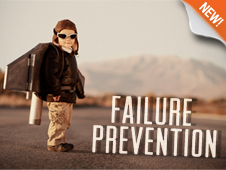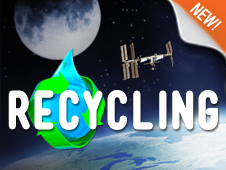When I first learned we were to create a module about failure, I was concerned: Does NASA really want to talk about failure? How can teachers use “failure” in their studies?
As I researched the topic, I realized that failure is not always as devastating as it sounds. Failure is a lesson learned. And you know the cliché: You don’t fail until you quit.
Failure is not the end; it’s part of the process. That’s what we want students to recognize as they create podcasts or multimedia projects using the new DIY Podcast module, Failure Prevention.

Because NASA’s goal is success, studying “failure” is a big part of what we do — we want to prevent failure. NASA scientists and engineers plan and test to the extremes. They know that a piece of hardware that survives in extreme conditions will succeed under normal working conditions.
So where can you apply this module to your curriculum? Science and technology classes would be a perfect fit. We will discuss more about the module and educational standards in a future post.
Much of the content of this module explains or shows the ways NASA tests models and prototypes to prevent failure. We have experts Victoria (Torey) Long and Clara Wright of NASA’s Kennedy Space Center. They are materials engineers who analyze failures after they’ve occurred. Besides several sound bites discussing failure prevention and analysis, Long and Wright demonstrate some of the techniques they use for analyzing failure.
Camille Alleyne of NASA’s Johnson Space Center was the deputy manager for the test and verification program for the Orion crew and service module. She too lends her expertise about failure prevention.
One of the exciting parts of the video clips is our selection of historic failures — exploding rockets. We all know that students will enjoy those. We also have links to recent hardware tests that NASA has performed, including dropping a test vehicle into water.
No NASA product about failure would be complete without the audio clip from NASA’s most successful failure — Apollo 13’s, “Houston, we’ve had a problem.” Even though the mission did not land on the moon, NASA gained experience in safely returning the crew to Earth after a malfunction.
I hope you and your students are successful when you build a podcast about preventing failure!
DIY Podcast: Failure Prevention
DIY Podcast Home
Please Note: If you leave a comment, do not include a link to your blog or other websites. We typically won’t be able to approve your comment if you add a URL.


